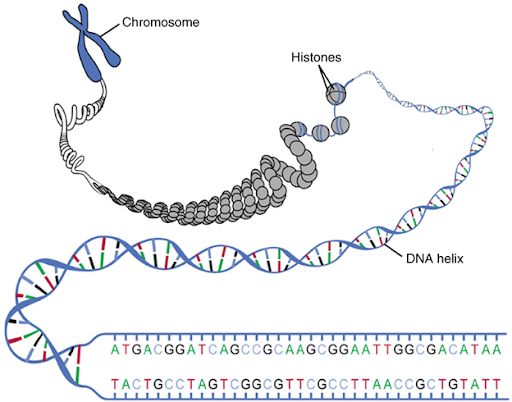Whether they’re eating Styrofoam or thriving in near-boiling temperatures, microbes push the limits of what living creatures can do. As it turns out, we have a decent understanding of how these seemingly simple organisms adapt to such extremes. In honor of Charles Darwin’s recent birthday (Feb. 12th), let’s look at why microbes are so dang good at evolution.
Evolution is how a species changes over time, and it generally occurs through alterations in DNA, known as mutations. While “mutation” might conjure thoughts of superheroes or deformed monsters, it is actually a constant process across all life. For cells to divide and organisms to reproduce, DNA has to be copied. However, this is an imperfect process. The cellular machinery that copies DNA makes roughly 1 mistake for every 100,000 bases (“bases” being the A’s, T’s, C’s, and G’s that make up the genetic code of DNA). Since organisms have millions to billions of bases in each cell, errors, and therefore mutations, are inevitable. Mutations also come from external elements damaging the DNA, which is how the sun’s UV light can cause skin cancer, for instance. You may not feel like Wolverine, but with every moment, your DNA is changing!

Despite the constant assault of mutations, a lot more has to happen to produce long term changes in a population of organisms. All organisms have DNA repair processes, and mutations that aren’t repaired usually cause either no change in cellular function or some kind of damage. Evolutionary changes don’t have to be helpful, but the beneficial ones are more likely to stick around in a population. Yet, even if a mutation is unrepaired and incredibly useful, mutations in sexually-reproducing organisms won’t be passed on to children if the mutations aren’t present in sex cells like sperm or eggs. All of this helps explain why evolution in macroorganisms takes thousands to millions of years. In microorganisms, however, we see drastic changes in days.
Microbes avoid a lot of what slows macroorganism evolution. They largely reproduce asexually, simply copying everything and splitting into two new cells. This means any unrepaired mutations can be passed on to the next generation. And these generations progress quickly; while it takes humans 20-30 years to create the next generation, bacteria can do so within hours in the wild. Between this and the fact that microbial populations have many more individuals than macroorganism populations (a teaspoon of soil can hold billions of microbes), there are far more opportunities for mutations to arise. If a mutation improves an individual’s chances of survival, the individual can quickly produce a new, evolved population.
So, while a microbe faces similar chances of mutating as a cell in a human, grasshopper, or tree, microbial populations use their sheer numbers and rapid, asexual reproduction to overcome the odds. Out of billions of cells, a single mutant can save a population facing extreme changes. Key evolutionary drivers like horizontal gene transfer definitely deserve credit too, but it is ultimately this remarkable game of numbers that places microbes as the reigning champions of evolution. Such remarkable flexibility, unmatched by other lifeforms, should make us humans question our self-proclaimed status as rulers of the natural world.
Peer edited by Isabel Newsome.